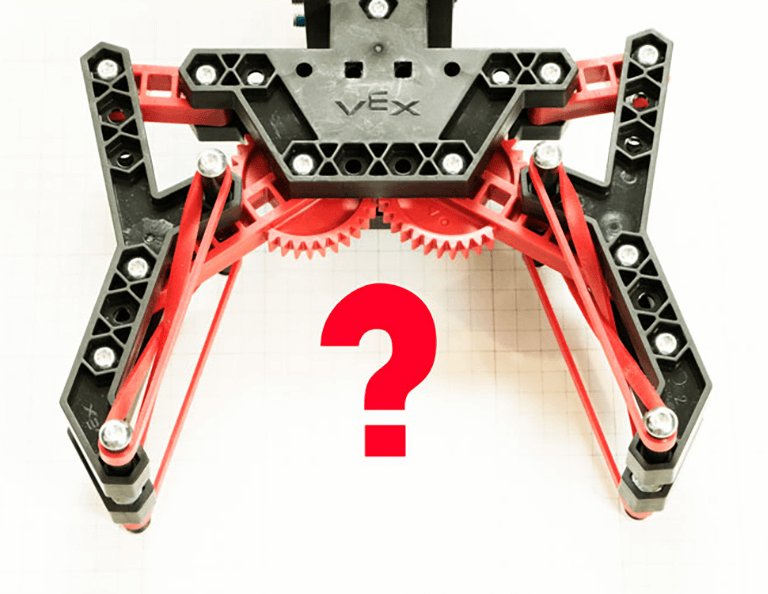Design By Request Preview
- 12-18 years old
- 480 minutes
- Advanced

Description
Learners will go through the engineering design process for an open-ended build activity.
Key Concepts
-
Request for Proposal
-
Iterative Design
-
Collaborative Design Process
-
Engineering Notebook
Objectives
-
Compose a Request for Proposal.
-
Design a solution to a proposed problem in a challenge.
-
Evaluate the best build to complete a designated task.
-
Construct a build to complete the designated task.
-
Distinguish between the different types of manipulators and accumulators.
Materials needed
-
VEX V5 Classroom Starter Kit
-
Engineering Notebook
-
Meter stick
-
Objects that the claw can grab (cones, bean bags, erasers, markers, cubes, etc.)
-
Cardboard box or storage bin
Facilitation Notes
-
The teacher can create a sample RFP with the class to model the process before the students create one on their own.
-
A Request for Proposal (RFP) is an invitation to solve a problem by a team. There are several components that can be included.
-
Sponsorship Overview- This section provides background information about the organization that is issuing the Request for Proposal. It gives background information about the problem to be solved and how the sponsor is hoping to fix the problem.
-
Research Description- This section outlines the problem to be solved and what is needed to solve the problem.
-
Overall Project Deliverables- This section identifies what is needed to solve the problem. This will include specific items that can be used to determine who can provide the best solution to the problem.
-
Proof of Concept- Sometimes the cost of creating a prototype is too high; so companies trying to earn the job create a proof of concept. A proof of concept can be considered a first prototype. It enables a team to demonstrate that the team's ideas can be successfully carried out. In this project, the students will be able to create their prototype with their VEX V5 Classroom Super Kit.
-
Flowcharts- Flowcharts are visual representations that enable programmers to work out steps and procedures of a robot's behavior or a program before creating code.
-
Pseudocode- An outline of a program that is written in plain language. Engineers often create pseudocode before they begin coding. This helps coders to avoid mistakes and confusion later when the code is actually developed.
-
Scheduling- Creating a schedule is important so the organization can determine how long the project will take. Schedules will include a list of tasks and resources that need to be completed with any dependencies. This is a way for the organization to also monitor the progress of the project if it is selected.
-
-
Make sure that there is enough space in the classroom to complete the challenge. Students can determine where to place the bin or box and how to hang the items. Students can stand and hold the "hanging" object or use something to hold the object up.
-
Provide timely intervention throughout the collaborative process. Students should present their work for feedback as they progress through the RFP and subsequent build. Some guiding questions for students can include: What have you tried? Why do you think it worked/didn’t work? What else could you add or take away from your build?
-
Encourage students to try different methods and learn from their mistakes. Students should have several iterations of their build by the time they are ready to make the physical model.
-
As students progress through a challenge, point out the steps of the design process that they’re doing.
-
The approximate pacing of each section of the Stem Lab is as follows: Seek- 120 minutes, Play- 60 minutes, Apply- 30 minutes, Rethink- 240 minutes, Know- 30 minutes.
Further Your Learning
Science
-
Discuss and research how object manipulators and accumulators are used in the real world in different situations.
Speech
-
Have students present their RFP's to an audience outside of the classroom, such as an engineering firm to receive real world feedback.
Educational Standards
Standards for Technological Literacy ((STL))
-
1.F
-
1.G
-
2M
-
2.N
-
3.F
-
8.E
-
8.F
-
8.H
-
8.J
-
9.G
-
9.H
-
9.J
-
9.K
-
9.L
-
10.G
-
11.L
-
11.Q
-
11.R
-
12.L
Next Generation Science Standards ((NGSS))
-
HS-ETS1-1
-
HS-ETS1-2
-
HS-ETS1-3
Common Core State Standards ((CCSS))
-
CCSS.SL.9-10.1
-
CCSS.SL.11-12.1
-
CCSS.SL.11-12.2
-
CCSS.SL.11-12.4
-
CCSS.WHST.9-10.2
-
CCSS.RST.9-12.3
-
CCSS.RST.9-10.2
-
CCSS.MP.1
-
CCSS.MP.2
-
CCSS.MP.3
-
CCSS.MP.5
-
CCSS.MP.7
Texas Essential Knowledge and Skills ((TEKS))
-
126.40.c.7
-
126.40.c.3
-
126.40.c.1
-
126.40.c.6
-
110.58.b.2
-
110.53.b.1